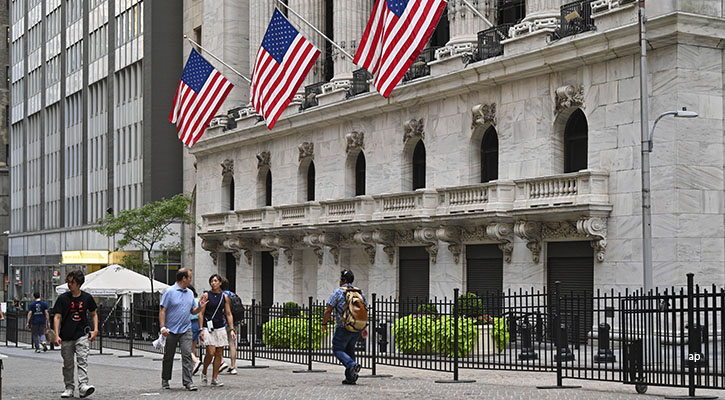For economic and market news relating to Asian ETFs, please refer to our “Asia ETF Roundup (Market) – March 2017”.
ETF Industry News
MSCI Proposes New Roadmap for China A-Share Inclusion
On 24 March 2017, MSCI unveiled a new proposal for the potential inclusion of China A-shares in its suite of international equity benchmarks and has engaged the investment community in a new round of consultations regarding its roadmap. The new proposal is based on the Stock Connect access framework and suggests limiting the inclusion universe to large-cap companies accessible through the Shanghai and Shenzhen Stock Connect Programmes, as well as excluding stocks which have experienced or are experiencing prolonged suspensions. Per the new proposal, the number of China A-shares to be included would be reduced to 169 (versus 448 under last year's proposal).
The new proposal directly addresses two of the three obstacles that MSCI cited last year when it decided against including China A-shares. These are: (1) the effective implementation of the QFII policy changes and removal of the 20% monthly repatriation limit; and (2) the effective implementation of new trading suspension treatment. MSCI stated it is in discussions with China exchanges in an attempt to remove the third obstacle--the pre-approval requirements by the local exchanges for launching financial products.
As the new proposal is based on the Stock Connect Programmes, global investors would have more ready access to the stocks that would be eligible for inclusion. ETFs tracking the affected indices, such as the MSCI China Index and the MSCI Emerging Markets Index, would be able to access the eligible China A-shares more freely and easily through the Stock Connects (albeit daily investment quotas exist). That said, limiting the universe of eligible stocks to just those large-cap China A-Share companies available through the Stock Connect programmes results in a cohort of equities that isn't wholly representative of the overall China equity market.
Please refer to our article for further details.
Hang Seng China Enterprises Index Enhancement Proposal – Adding Red-chips and P-Chips
On 3 March 2017, Hang Seng Indexes launched a proposal to expand the coverage of its Hang Seng China Enterprises Index (HSCEI). Specifically, the firm is proposing to add Red-chips and P-chips to the index, with the aim of positioning the index as a representative “China Index of Hong Kong Market”. At present, the HSCEI only includes the H-Shares (companies incorporated in mainland China and approved by the China Securities Regulatory Commission (CSRC) for a listing in Hong Kong) and accounts for around one-third of the total market capitalization of Chinese enterprises.
The proposal suggests keeping the selection mechanism for H-Shares and the number of H-Shares constituents (i.e. 40) unchanged while adding Red-chips and P-chips gradually to the index during its regular quarterly review. Hang Seng Indexes will consult market participants on (1) the number of Red-chips and P-Chips to be added; (2) the criteria for selecting Red-chips and P-Chips; (3) the definition of P-Chips; and (4) the process of adding Red-chips and P-Chips to minimize market impact. Hang Seng Indexes intends to share additional details regarding this proposal in August 2017.
As of end-2016, there were 14 ETFs tracking the HSCEI with combined AUM of US$9 billion.
Citi Adds China Onshore Bonds to Government Bond Indexes from February 2018
On 6 March 2017, Citigroup announced that effective from February 2018, China onshore bonds will be included in its three government bond indexes – the Emerging Markets Government Bond Index (EMGBI), Asian Government Bond Index (AGBI) and the Asia Pacific Government Bond Index (APGBI). Upon full inclusion, Chinese bonds will account for 52%, 57% and 47% of the value ofthe three indices, respectively.
Additionally, Citigroup introduced two new related indices – EMGBI-Capped and AGBI-Capped. that the benchmarks are designed to limit individual market exposure by imposing a maximum country weight criterion (10% for EMGBI-Capped and 20% for AGBI-Capped).
Citigroup is also expanding the World Government Bond Index family with the addition of two new indices, the World Government Bond Index – Developed Markets (WGBI-DM) that excludes the emerging market exposure and the World Government Bond Index – Extended (WGBI-Extended, where China will account for 5% of the index). These indices will complement the existing World Government Bond Index (WGBI), which will remain unchanged.
Recall that in January, Bloomberg announced the creation of a new parellel index that incorporated RMB-denominated securities into its flagship Global Aggregate Index. Its Global Aggregate Index has remained unchanged as a renminbi-free global benchmark. The new index was launched on 1 March 2017. RMB-denominated securites account for 5% of the new index.
Singapore Exchange Plans to Launch Leveraged/Inverse ETFs in Q2
According to the Nikkei Asian Review, the Singapore Exchange (SGX) is planning to launch leveraged and inverse ETFs in the second quarter. Recall that in August 2016, the Monetary Authority of Singapore issued “FAQs on Offers of Shares, Debentures and CIS” which included some items related to leveraged and inverse products. Also in February 2017, SGX launched a dedicated web page for leveraged/inverse products.
RQFII ETF Watch – Net Outflows in March totalled Rmb 2.0 billion
- RQFII ETFs recorded estimated net outflows of Rmb 2.0 billion in March 2017 (7% of beginning and ending AUM). This is compared to net inflows of Rmb 1.4 billion in February. This puts YTD estimated net outflows from RQFII ETFs in Hong Kong at Rmb 1.7 billion.
- The net outflows came from the ChinaAMC CSI 300 Index ETF (83188 & 03188), estimated at Rmb 1.1 billion, followed by the CSOP FTSE China A50 ETF (82822 & 02822), estimated at Rmb 0.7 billion.
- The largest A-Share ETF by AUM in Hong Kong, iShares FTSE A50 China Index ETF (02823), recorded net outflows estimated at Rmb 0.6 billion in March. This compares to net outflows of Rmb 0.3 billion in February. As of 31 March 2017, we estimate the YTD total net outflows from the iShares FTSE A50 China Index ETF were Rmb 2.5 billion.
.png)
New Launches and Listings
17 Leveraged/Inverse ETFs Listing in Hong Kong
On 14 March 2017, Samsung, Mirae, CSOP and ChinaAMC each launched 4 leveraged/inverse ETFs on the Stock Exchange of Hong Kong tracking the 2x and -1x daily performance of the Hang Seng Index and the Hang Seng China Enterprises Index respectively.
Subsequently, on 20 March 2017, E Fund also listed an inverse product on the Stock Exchange of Hong Kong, which aims to track the inverse (-1x) daily performance of the Hang Seng China Enterprises Index.
The listing of these 17 inverse/leveraged ETFs puts the total number of ETF listings in Hong Kong at 206 (158 ETFs and 48 multiple counters) of which 30 are leveraged and inverse products.
Yuanta Lists an ETF and 2 Leveraged/Inverse ETFs in Taiwan
On 14 March 2017, Yuanta Securities Investment listed 3 ETFs on the Taiwan Stock Exchange, including 2 leveraged/inverse ETFs. The ETFs aim to track the 1x, 2x and -1x daily perfromance of the S&P US Dollar Futures Index ER, respectively.
Korea Investment Lists an ETF in Korea
On 16 March 2017, Korea Investment listed an ETF on the Korea Exchange, namely the KINDEX MSCI Russia (Synth) ETF. The ETF tracks the MSCI Russia 25% Capped Index by mainly investing in swaps.
Samsung Lists 5 Sector ETFs in Korea
On 28 March 2017, Samsung Asset Management listed 5 sector ETFs on the Korea Exchange. The ETFs track the KRX IT Hardware Index, KRX Consumer Discretionary Index, KRX Consumer Staples Index, KRX IT Software Index and Kodex Healthcare Index, respectively.
Hanwha Lists an ETF in Korea
On 28 March 2017, Hanwha Asset Management listed an ETF on the Korea Exchange , namely the ARIRANG MidLVol ETF. The ETF tracks the FnGuide MidCap LowVol 50 Index.
The listing of ETFs by Korea Investment, Samsung and Hanwha puts the total number of ETF listings in Korea at 267.
Nikko Lists a REIT ETF in Singapore
On 29 March 2017, Nikko Asset Management listed an ETF on the Singapore Stock Exchange, namely the NikkoAM-StraitsTrading Asia ex Japan REIT ETF (stock code: CFA). The ETF tracks the FTSE EPRA/NAREIT Asia ex Japan Net Total Return REIT Index. The index currently consists of 23 REITs across developed and emerging economies in Asia excluding Australia, New Zealand and Japan. This is the world’s first Asia ex-Japan REITs ETF. The ETF is managed by Nikko Asset Management with the real estate investment arm of Straits Trading as the investment advisor.
This ETF is classified as an Excluded Investment Product (EIP).
The listing of this ETF puts the total number of ETF listings in Singapore at 81.
Capital Investment Lists 2 Leveraged/Inverse ETFs in Taiwan
On 30 March 2017, Capital Investment Trust listed 2 leveraged/inverse ETFs on the Taiwan Stock Exchange. The ETFs track the TAIEX Daily Return Leveraged 2X Index and the TAIEX Daily Return Inverse -1X Index, respectively.
Mega Lists an ETF and an Inverse ETFs in Taiwan
On 31 March 2017, Mega International Investment Trust listed an ETF and an inverse ETF on the Taiwan Stock Exchange. The ETFs track the TIP TAIEX+ Blue Chip 30 Index and the TIP TAIEX+ Blue Chip 30 Index Daily Return Inverse -1X Index, respectively.
The listings by Yuanta, Capital Investment and Mega put the total number of ETF listings at 74, of which 32 are leveraged/inverse ETFs.
List of ETFs Launched in March 2017
.png)

















